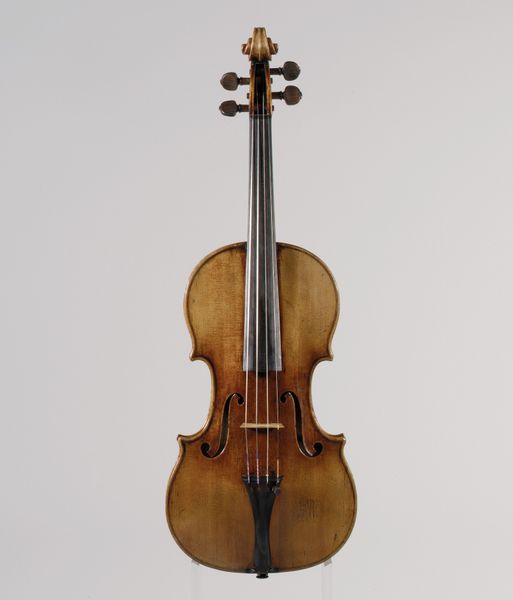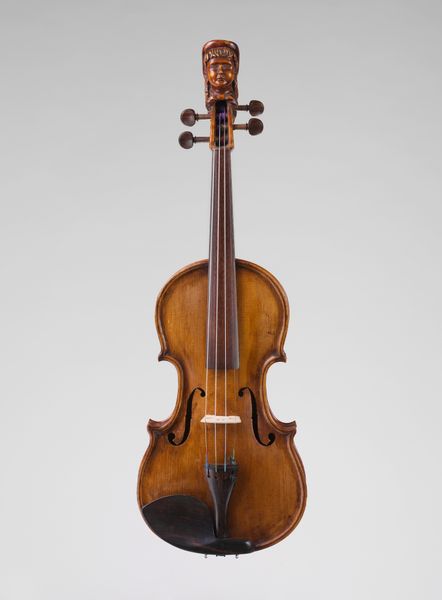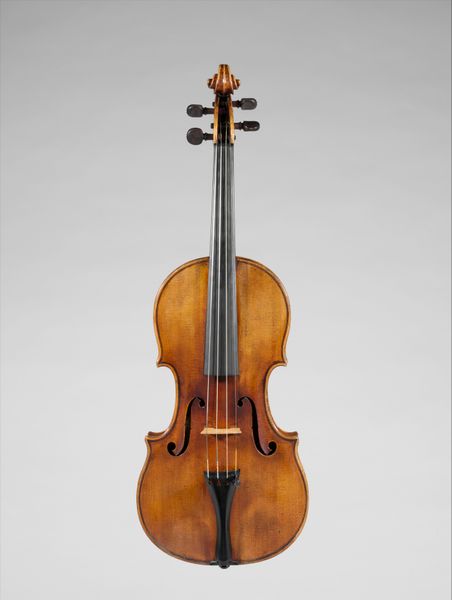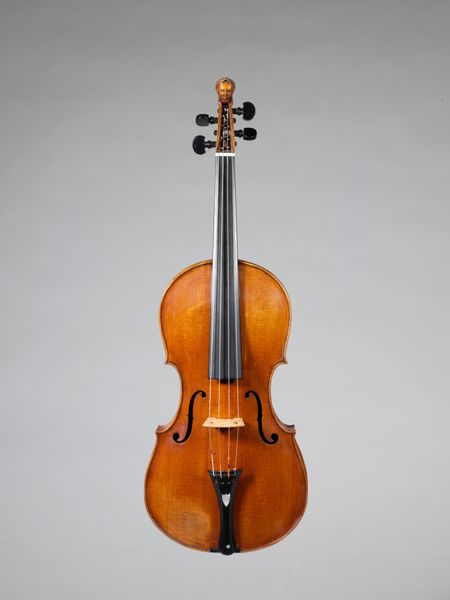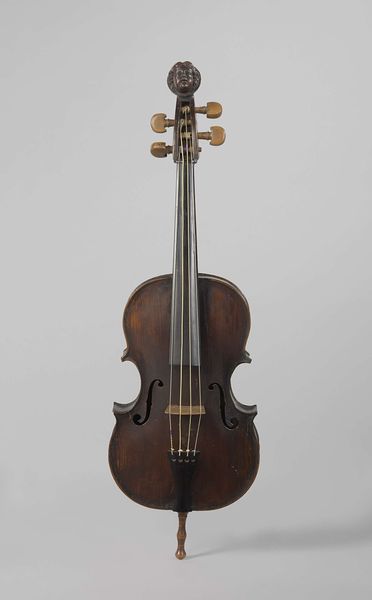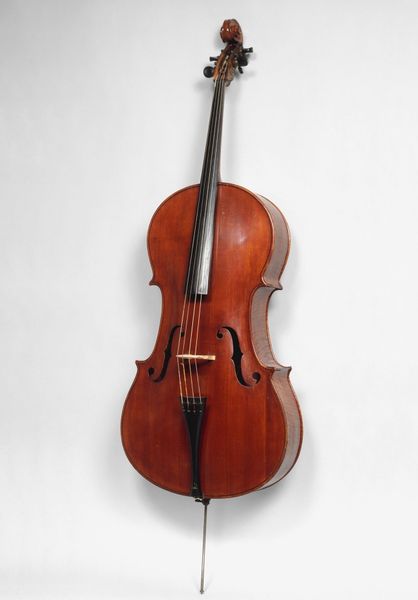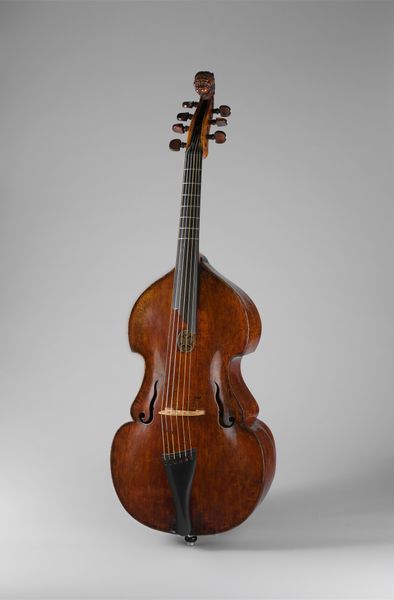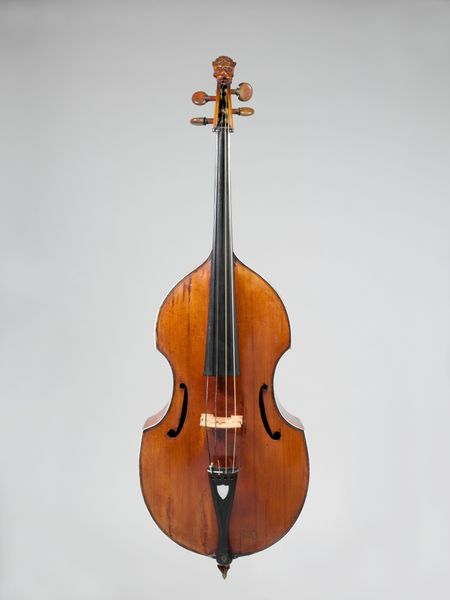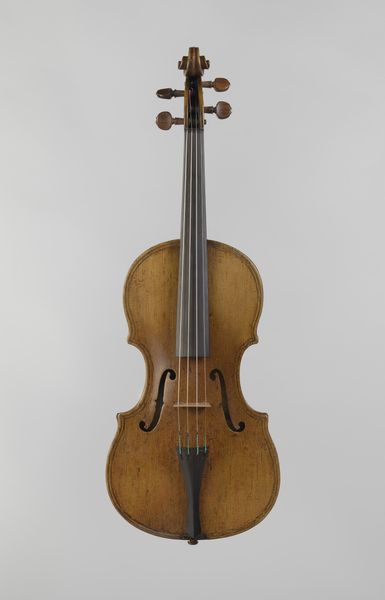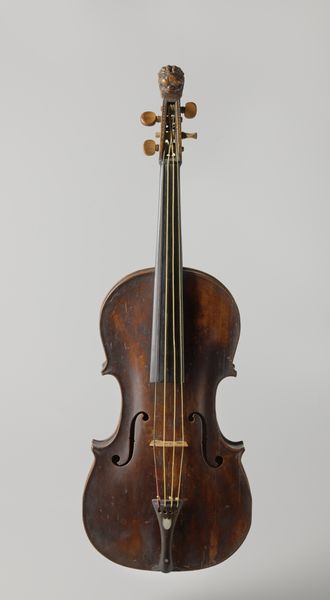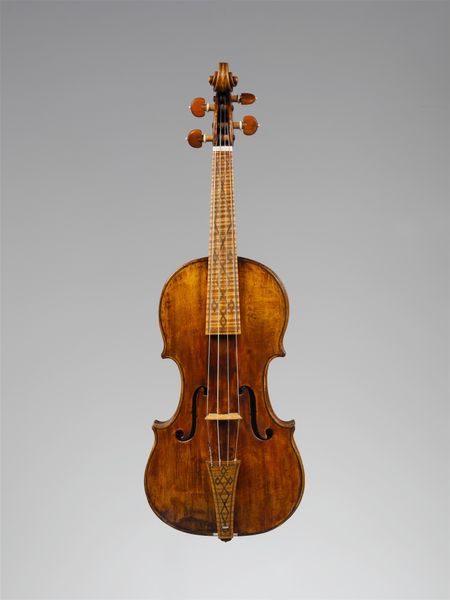
wood
#
portrait
#
classical-realism
#
wood
#
musical-instrument
Dimensions: Body L.: 75.5 cm (29-1/2 in.); Upper bouts: 34.2 cm (13-1/2 in.) Middle bouts; 23.6 cm (9-1/2 in.; Lower bouts: 43.9 cm (17-1/2 in.)
Copyright: Public Domain
This violoncello was made by Jean Baptiste Vuillaume, a prominent French luthier, who lived from 1798 to 1875. Vuillaume was a key figure in 19th-century violin making, working in a period when France experienced significant social and political changes. The rise of the middle class and the Industrial Revolution created new markets for musical instruments, and Vuillaume was well-positioned to capitalize on these trends. His workshop produced instruments that catered to both professional musicians and amateur enthusiasts. The violoncello embodies the cultural values of its time, reflecting the increasing importance of music in domestic life and public performance. The instrument's craftsmanship and materials speak to the economic prosperity and technological advancements of 19th-century France. The museum context is crucial here, offering insights into the social conditions that enabled its creation and the ways in which cultural institutions shape our understanding of art. By examining historical records, we can gain a deeper appreciation for the violoncello as a cultural artifact.
Comments
No comments
Be the first to comment and join the conversation on the ultimate creative platform.
